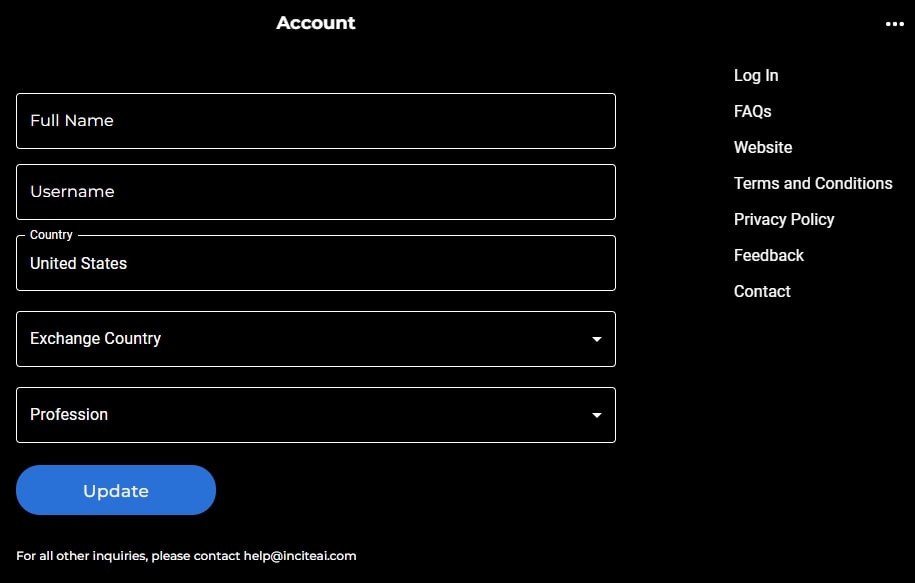Because they often handle sensitive financial data, and even personal information, security and protection of the data is crucial. An unauthorized or unintentional misuse of information can result in massive financial losses as well as reputational harm. Here are the top 10 tips to help you assess the security and privacy capabilities on these platforms.
1. Think about Data Encryption
Secure transmission of data: Ensure that the platform uses encryption protocols that are secure, like SSL/TLS to secure any data exchanged between the servers of your device and those of theirs.
In-rest encryption: Check that sensitive information stored on platform servers is encrypted using secure encryption standards.
Make sure you have security from end to end: This is a must in order to secure sensitive communications or data.
2. Examine the authenticity of measures
Two-factor authentication (also called copyright) is a great method of increasing security.
Biometric authentication - Check to see if there's biometric options for mobile app login (e.g. finger print, facial recognition, etc.).
Password policies: Check whether the platform follows strict policies on passwords (e.g. minimum length or requirements for complexity).
3. Check for Compliance
Financial Regulations: Check that the platform is compliant with the relevant financial regulations.
Laws on data protection. Verify compliance with the privacy laws for your location (e.g. CCPA, GDPR) If applicable.
Audit certifications: Find out whether the platform has been subject to audits of security by third parties or has certificates (e.g., SOC 2, ISO 27001).
Review Controls for Access to Data
Role-based access: Make sure the platform is using role-based access controls (RBAC) to restrict access to data only to users with permission.
Verify whether you can create permissions with granular levels for different users and team members.
Activity monitoring: Determine whether the platform monitors and records user activity for suspicious behavior.
5. Assess the vulnerability management
Regular updates: Make sure your platform is always updating its software to patch weaknesses.
Penetration test: Make sure that your system is tested regularly to detect and fix any security flaws.
Programs for bug bounty: Find out whether the platform offers a bug bounty program to incentivize external security researchers to disclose security holes.
6. Evaluate Data Privacy Policies
Transparency. Read the platform's Privacy Policy to find out the nature of data collected and how it will be used.
Data minimization: Ensure that the platform collects only the data needed to run the platform.
Third-party sharing : Check the policy of sharing data on the platform and conditions.
7. Secure API usage must be inspected
API security - Check that the API of your platform employs authenticated methods that are secure, such as OAuth or API keys, and also encrypts any data exchanges.
Rate-limiting: Verify whether the API has a limit on rate to avoid abuse and brute-force attacks.
Verify the logs of access. Verify that the system tracks API usage, and logs it to track usage.
8. Evaluate the Recovery of Incidents and Response
Incident response plan - Ensure that the platform is equipped with a procedure to handle data breaches and other security incidents.
Review the platform's notification policy to determine if the platform informs its users in a timely manner if there is a breach of security.
Make sure you have backups of data and disaster recovery plans.
9. Review Physical Security Measures
Data center security: Ensure that the servers of the platform are located in secure data centers that have physical security measures (e.g., monitoring, access controls).
Redundancy: Verify whether the platform is equipped with redundant systems that will ensure data availability in case of hardware failure.
Geographic distribution: To improve resilience, make sure the data is distributed across several locations.
10. Check the privacy settings of your users
Data deletion - Ensure that you erase all personal data completely from the website if and when you cease using its services.
Privacy settings: Make sure to check whether the platform offers privacy settings to limit the type of data public or shared.
Check to see if anonymization is being performed on the data used for analytics or machine learning.
Bonus Tips
Feedback and reviews from users Review and feedback from users to determine the platform's reputation in terms of security and privacy.
Trial period: You are able to make use of a demo or a no-cost trial to test out the privacy and security controls.
Support for customers: Make sure the platform offers robust support regarding security issues or concerns.
These guidelines will allow you assess the security and privacy of AI trading platforms that predict/analyze stock prices. Your personal information and financial information will be secure. A secure platform not just safeguards assets, it also builds confidence in their services. Read the top rated ai for investing recommendations for website tips including ai stock market, ai investment platform, investing ai, incite, ai stocks, market ai, ai for stock trading, using ai to trade stocks, best ai stock, ai stock and more.

Top 10 Tips On How To Evaluate The Speed And Latency Of The Ai Technology For Predicting And Analyzing Stocks
Latency and speed are important factors when looking at AI stock predicting/analyzing trading platforms, especially for algorithmic traders, active traders as well as high-frequency traders. Even milliseconds in delay can adversely affect the profitability of trades and execution. Here are the top ten tips for assessing the speed and latency of these platforms:
1. Real-time data feeds to be evaluated
Data delivery speed: Ensure that the platform delivers real-time data with minimal delay (e.g., sub-millisecond latency).
Verify the source's proximity to major exchanges.
Data compression: Make sure that the platform uses efficient data compression in order to speed up data delivery.
2. Test Trade Execution Speed
Processing speed of orders The speed at which the platform processes and executes trades after you have submitted an order.
Direct market access (DMA) Make sure that the platform supports DMA which lets orders be sent directly to the exchange without intermediaries.
Examine the execution reports to see the timestamps on order confirmation fill, submission and order confirmation.
3. Assess Platform Responsiveness
User interface (UI) Speed test the platform's response time to your inputs.
Chart updates: Make sure that charts and visualisations update in real-time, with no lag.
Performance of mobile apps. If you're using a smartphone app, it should perform as quickly as the desktop version.
4. Verify that the infrastructure is not low-latency.
Server Locations: Ensure whether the server used by the platform is with low latency located near major financial exchanges or hubs.
Co-location service: See whether the exchange offers colocation services that allow you to host your trading algorithms on servers near to the exchange.
High-speed networks: Make sure that the platform uses high-speed fiber optic networks or technology with low latency.
5. Assess the Backtesting and Simulation speed
Test the platform's capacity to analyze and process historical data.
The latency on platforms must be minimal enough to allow for real-time simulations of trades.
Parallel processing: Make sure the system is running parallel processing or distributed computing to speed complicated computations.
6. Calculate the API Latency
API response times: Determine the speed at which APIs respond to requests (e.g. getting data from the platform, putting in orders).
Limits on rates. Check the rates of the API in order to avoid any delays when high-frequency trading.
WebSockets support: Ensure that the platform utilizes WebSockets protocols to provide low-latency streaming of data.
7. Test Platform Stability Under Load
High-volume Trading: Create huge volumes of trading scenarios to determine if your platform is reliable and stable.
Market volatility Test the platform in periods of high market volatility to ensure it is able to handle the rapid price movements.
Utilize the tools available on the platform to stress-test your strategies under extreme conditions.
8. Assess Connectivity and Network
Speed requirements for Internet: Make sure your connection is up to the recommended speed of your platform.
Reliable Connections: To minimize delay, verify that your platform supports redundant internet connections.
VPN latency: When you use a VPN platform, verify whether the latency is substantial and if you have alternatives.
9. Check for speed optimization features
Pre-trade analytics - Ensure that the platform has pre-trade analytical tools to optimize the routing of orders.
Smart order routing: Check whether your platform uses SOR to determine the most efficient and speediest execution venue.
Monitoring of latency: Make sure your platform lets you analyse and track your latency in real-time.
Benchmarks for User Feedback Review
User feedback: Use user reviews to determine the performance of the platform in terms of the speed of its operation and latency.
Benchmarks from third-party sources: Search for independent benchmarks and reviews that compare the platform's performance against its rivals.
Case studies: Contact the platform to see if it has any cases studies or reviews that highlight its capabilities with low latency.
Bonus Tips
Trial period: Test out a free test or demo version of the platform to test how it performs in real-world scenarios.
Customer support: determine if the platform has assistance with issues related to latency or for optimization.
Hardware needs. Check to see the platform needs specialized hardware (e.g. the latest high-performance computer) in order to run at optimum speed.
With these suggestions, it is possible to accurately assess the speed, latency, and accuracy of AI software for analyzing and predicting stocks. This allows you to select a platform according to your specific needs in trading and minimize any possible delays. Low latency can be crucial for high-frequency or algorithmic traders where even small delays can be a significant factor in their profits. Read the top ai stock analysis for site tips including ai software stocks, ai trading tool, ai for trading stocks, chart analysis ai, ai trading tool, ai options trading, best stock prediction website, best ai stocks, chart analysis ai, stock trading ai and more.
